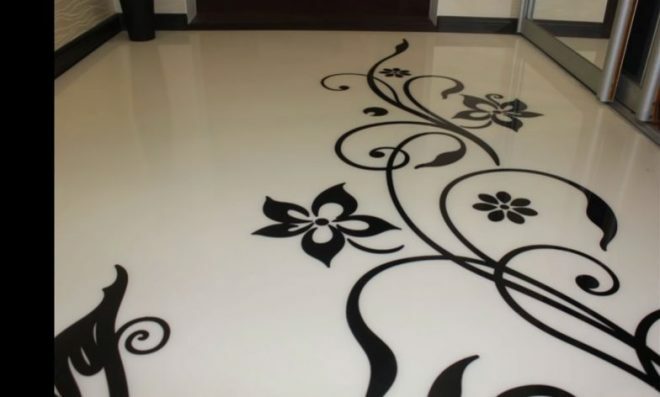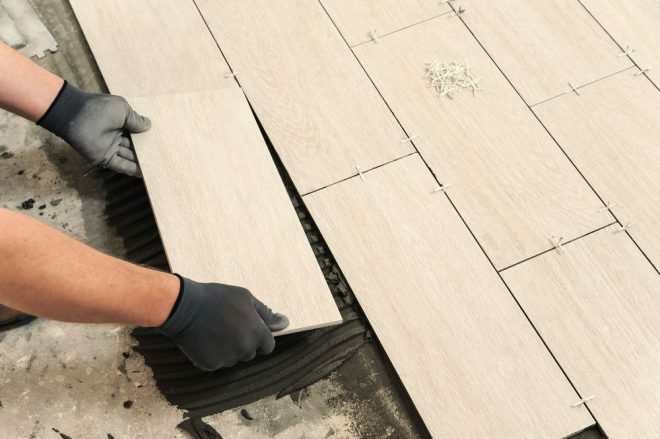
Material Selection Criteria
The buyer can choose one or another material for several reasons:
Content:
- Features of waterproofing the bathroom ↓
- What type of waterproofing is suitable? ↓
- Technology and step by step instructions ↓
- Materials and Tools ↓
- Waterproofing a wooden floor ↓
- How much does waterproofing the floor in the bathroom ↓
- Tips and tricks for waterproofing the bathroom floor ↓
- Financial opportunities. The use of inexpensive roll materials can be considered a budget option. Cement-based coating formulations with polymer additives are also available at an affordable price. If you want to save money, remember that accuracy and exact observance of the recommended operations will be the main quality factor. In this case, inexpensive material will be no less reliable than a more expensive analogue, but it will yield to the latter in the complexity of the work. Often you have to overpay for the speed and ease of installation. Material at a high price is more technologically advanced in work and often when using it, a simple familiarization with the instructions is enough.
- Special conditions. This is mainly base material. So wooden floors will require special preparation and a waterproofing layer with increased elasticity. Since such a floor is mobile and subject to dynamic changes in geometry, due to fluctuations in temperature and humidity. The floor on the metal frame is much less common. Seasonal changes do not threaten him, but in terms of mobility he, oddly enough, differs little from wood and requires special processing methods.

Features of waterproofing the bathroom
Almost the entire area of a house or apartment does not need specialized protection against moisture. The only room where there is a need for waterproofing is the bathroom.
During construction or repair, pay attention to the following:
- High humidity makes high demands on all communications. Wiring must be fully protected and grounded.
- Do not block or reduce the area of the ventilation openings. Access to fresh air is necessary to normalize the composition of the air. This significantly increases the service life of plumbing fixtures, finishing materials and reduces the amount of condensate in the supply pipes with cold water.
- Just before work to inspect the entire floor area, the real level of which during construction in apartments is lower than in the rest of the apartment. Get it to the norm with a screed. In the houses of the old foundation during the operation, it usually fails. It is better to remove it to the floor slab and make a waterproofing layer. After that, you can fill the leveling layer of the screed.
- Special attention necessary to give leading communications. Most often, it is in the bathroom that access to the mine is located. The interfloor pipe passage is one of the weakest points in terms of protection against moisture penetration to the lower floor. Below we will consider ways to effectively solve this problem.
What type of waterproofing is suitable?
There is no fundamental difference in what material will be used for processing. High-quality material and technology compliance will guarantee a positive result.
Here are the main waterproofing methods:
- Coating compounds. The most reliable and easiest option. True, high-quality material in this category is quite expensive. If a fiberglass mesh is used, then after installation you can completely forget about the problem.
- Roll materials. The market offers the most diverse. These are bitumen films with various reinforcing bases, PVC membranes and other water-repellent roll materials. Sometimes this technology is called tapestry. It got this name due to the fact that films based on bitumen are heated to a semi-liquid state, when it becomes possible to firmly fix them on the basis. For convenience, cold-rolled coil materials have an adhesive layer that performs the same function.
- Sometimes a separate category is the painting technology for applying a waterproof layer with liquid mixtures. It is close to the coating method. The difference lies in deeper impregnation and giving the concrete layer specific qualities. But, without having an elastic film, it completely depends on the integrity of the base.
Technology and step by step instructions
Depending on the method of waterproofing and the materials used, the following sequential operations are distinguished:
- Surface preparation. General rules for all methods. The base must be without large cracks, level and level with no grease stains, dust and dirt. Waterproofing compounds are applied to a clean and dry surface.
- The next step may include one or more operations. This is a direct application of a water-repellent layer. A prerequisite is entry to adjacent walls at least 10 cm high. The easiest way is plastering. The instructions for use clearly state how this tool is used. Follow the recommendations. This is the number of layers, the drying time of each of them and the consumption of the composition. Glue-coated roll materials are bound to overlap. Simple films require additional waterproofing treatment. The quality of sealing joints should not be inferior to the total area of coverage. Surfaced materials are more difficult to install and require a special tool. Heating by burners of various designs is almost not used today. An industrial hairdryer is used for this purpose.
- Preparing for the finish. Regardless of the material of the final finish, the isolated area should be treated very carefully. It is advisable to exclude the ingress of foreign objects. Shoes are inspected for the absence of stones and metal elements in the sole. Do not use sharp objects when pouring screeds.

Materials and Tools
The tool kit is determined by the coating material and method of application. The list of tools and their functions:
- Brush. It is used for coating and painting method, if the consistency of the composition is sufficiently liquid. Cross application is recommended, i.e. the brush works in perpendicular directions.
- Roller. Used like a brush, but performance is higher. The corners and complex wall configuration are not always covered. Requires additional difficult areas to pass with a brush
- Putty knife. Thick mastics and mixes are distributed with this tool.
- Spray. Professional mixes on a polymer or rubber basis are applied with special equipment. You can independently use a spray gun, provided that the composition passes through the nozzle and a high-quality film.
- Burners and industrial hair dryers. These tools are used for surfacing materials. They require safety precautions and increased accuracy to avoid accidental fire.

Waterproofing a wooden floor
Fairly complex and time-consuming operation. It is required to carry out a number of activities with the strict implementation of all recommendations:
- Providing air access. During design and installation, a ventilation system is provided.
- Antiseptic treatment. High humidity damages wood fiber. Today there are effective remedies.
- Impregnation, and sometimes repeated, will reliably save the floor from spoilage and significantly reduce dimensional fluctuations with changes in humidity and temperature. If it is decided to put tile material on a wooden floor, then reinforcement is necessary. The best results are provided by comprehensive waterproofing. The combined use of coating and roll materials. Sometimes double reinforcement is used. The first is done directly to fix the boards. Only after this is treated with waterproofing compounds. The second from above, together with pouring screeds.
How much does waterproofing the floor in the bathroom
The cost of work depends on the amount of material costs and labor costs. The differences can be very significant.
Depending on the region, you can find offers from 100 rubles / m2, but in reality for this amount you can make high-quality waterproofing only on your own.
With hired labor, this amount grows in two, or even three times. An invitation from a company to apply rubber and polymer high-tech coatings will cost even more.

Tips and tricks for waterproofing the bathroom floor
When applying a coating in the bathroom, there are several nuances that should be paid attention to. This, of course, is a mine. Often its level is below the floor. It is required to be made higher than the final coating, otherwise the idea of waterproofing is discredited.
What is the use, if the floors will stably hold water, which flows into the mine compartment, will leak down. If there is a decorative covering, then it is removed. It is useless to waterproof it. It is better to restore it after finishing work with the floor.
There is an entrance to any room. This is the door. Most often wooden. The lower part of the box falls into the zone of possible flooding. Therefore, it is strongly recommended that the unprotected part be treated with an appropriate compound. The processed nut will never distort and the door, even with water, will not jam.


